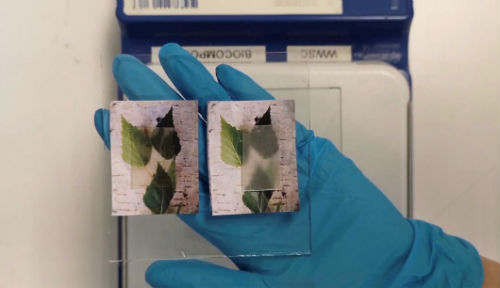|
NOVIDADES
Three years ago, we heard how scientists from Sweden's KTH Royal Institute of Technology had created transparent wood – it could serve as a cheaper alternative to the silica-based glass currently used in windows and solar cells. Now, the material is additionally able to store heat and later release it. In order to produce the initial version of the transparent wood, a KTH team led by Prof. Lars Berglund started by chemically removing light-absorbing lignin from natural balsa wood fibers – lignin is one component of wood cell walls.  The material is clear when storing heat (left) and turns cloudier upon releasing it (right) Credit: American Chemical Society
More recently, Berglund and PhD student Céline Montanari added a "phase-change" polymer called polyethylene glycol (PEG) to the treated wood fibers and PMMA. Ordinarily taking the form of a solid, PEG has a high affinity for wood, plus it's also able to contain and disperse heat. It does so by melting when it reaches a temperature of 80 ºF (27 ºC), storing energy in the process. When it later cools back down, it reverts to a translucent solid, releasing that stored energy. "During a sunny day, the material will absorb heat before it reaches the indoor space, and the indoors will be cooler than outside," says Montanari. "And at night, the reverse occurs – the PEG becomes solid and releases heat indoors, so that you can maintain a constant temperature in the house." As an added bonus, the wood fibers and PEG are both biodegradable. Although the PMMA is not, it could likely be replaced with a more eco-friendly polymer, allowing the material to completely biodegrade when discarded. It is hoped that a commercialized version of the technology may be on the market within five years. New Atlas. Posted: April 03, 2019. |
|||||||||||||||||||||||||